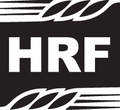Even the cleanest-looking hay, grains and commercial feeds can hide invisible threats: mycotoxins. Produced by moulds like Aspergillus, Fusarium, and Penicillium, these toxic compounds are a growing risk for horses. That's why many owners now include mycotoxin binders as part of their feeding programs.
Adding a high-quality binder to your horse’s feed can help trap and remove these toxins safely, protecting your horse’s health and performance before problems arise. This extra layer of defence is especially valuable for sensitive horses, breeding stock, and those in regular work or competition.
Why Horses Need Protection from Mycotoxins
-
Feed contamination is common:
Mycotoxins can contaminate hay, grains and commercial feeds — even when they look clean and fresh. -
Climate change is making it worse:
Warmer, wetter conditions in many regions have increased the prevalence of moulds and mycotoxins. -
Hidden risks:
Even low or invisible levels of contamination can affect your horse’s health over time.
The Health Risks of Mycotoxins in Horses
Unchecked mycotoxin exposure can cause a wide range of health issues, including:
-
Liver and kidney damage
-
Neurological problems
-
Suppressed immune function
-
Reproductive challenges
-
Digestive disturbances
-
Declining performance, energy, and behaviour
In many cases, these problems develop gradually, making them easy to miss until they become serious.
When Mycotoxin Binders Are Especially Valuable
Mycotoxin binders are commonly recommended:
-
For horses showing persistent digestive issues or unexplained health concerns
-
During humid seasons when mould growth peaks
-
When feeding older or stored hay and grain
-
After flooding or extreme weather that may have affected feed quality
They are particularly useful as a preventive measure in high-risk periods or environments.
How Mycotoxin Binders Work
Mycotoxin binders are substances that physically bind to mycotoxins in the digestive tract, preventing them from being absorbed into the bloodstream. Once bound, the toxins are safely excreted in the manure.
Different types of binders target different groups of toxins:
-
Bentonite clay and other aluminosilicates: Particularly effective against aflatoxins.
-
Glucomannans from yeast cell walls: Bind a broader range of mycotoxins.
-
Activated charcoal: A general binding agent that can trap various toxins, though it may also absorb nutrients if not carefully managed.
-
Commercial blends: Often combine several technologies for broader protection.
Why Mycotoxin Binders Are Becoming Standard
Today, using a mycotoxin binder is increasingly considered a smart, proactive step, particularly for horses in performance work, breeding programs, or with known sensitivities.
Rather than waiting for problems to emerge, binders offer peace of mind that you're protecting your horse from the invisible but serious risks mycotoxins can pose.
Fiskens Nutritional Science
Fiskens feeds are formulated in collaboration with qualified equine nutritionists for optimal performance and balance. With over 60 years of expertise in equine nutrition, Fiskens is a trusted leader in developing scientifically-backed feed solutions that support horse health and performance across all disciplines.
Superior nutrition that won't break the bank!
